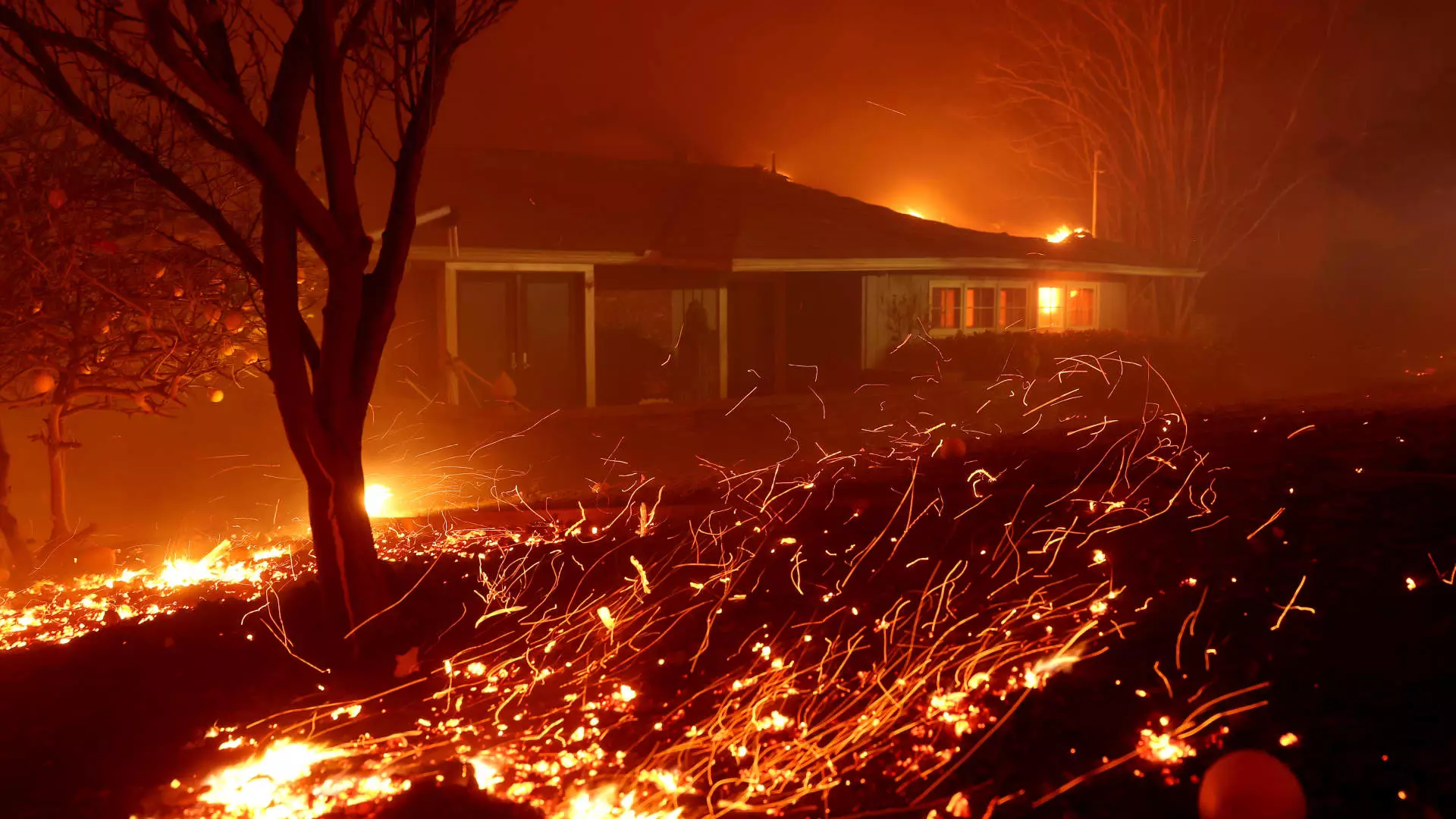The escalating frequency and intensity of natural disasters in the United States, exemplified by the recent wildfires in Los Angeles, raise pressing questions about the future of real estate markets and insurance costs. Climate change is not an abstract issue anymore; it is becoming an existential concern with tangible implications for homeowners, investors, and the broader economy. As insurers reevaluate their pricing structures and analyze risks more critically, property values are likely to witness a seismic shift, reshaping real estate dynamics across the nation.
Although the full economic impact of the Los Angeles wildfires is yet to be assessed, forecasts indicate that we are only beginning to comprehend the scale of financial losses attributed to climate-related disasters. According to an analysis by First Street, a climate-risk assessment firm, it’s estimated that by 2055, approximately 84% of homes in the U.S. may experience a decline in value, culminating in an astonishing $1.47 trillion loss. Jeremy Porter, the head of climate implication research at First Street, succinctly encapsulates the situation by claiming, “Climate change is no longer a theoretical concern—it is a measurable force reshaping real estate markets and regional economies.”
The looming specter of rising insurance premiums adds another layer of complexity. Insurance costs are projected to rise by an average of 25% over the next three decades due to both systematic underpricing of risk and escalating climate-related hazards. While national averages suggest a moderate decrease in property values of about 3%, local variations paint a much grimmer picture. In certain counties across Texas, Florida, and Louisiana, some homeowners might see their property valuations plummet by as much as 50%.
Dave Burt, founder of DeltaTerra Capital, emphasizes that an estimated 20% of U.S. homes will confront issues of devaluation stemming from climate change effects within just five years. Drawing parallels with the subprime mortgage crisis, he highlights critical vulnerabilities in the insurance industry. Previously, insurers had not adjusted their pricing strategies in conjunction with increasing weather-related calamities. However, the changes in patterns are becoming undeniably stark, leading many analysts to fear the forthcoming correction in housing markets could mimic the severe downturn from 2007 to 2012.
Burt predicts that value reductions in at-risk markets could reach upwards of 30%. This imminent decline raises questions regarding the stability of the housing market, which could potentially mirror the systemic failures witnessed during the Great Recession.
Warnings are being voiced well beyond the investment community; even politicians like Senator Sheldon Whitehouse recognize that the insurance industry poses substantial economic threats. He foresees that as the situation escalates, the repercussions of insurance market failures could ripple through the broader financial ecosystem, causing mortgage availability and housing sales to stagnate.
The ramifications of these disasters extend beyond immediate monetary losses. Following Hurricane Sandy in 2012, foreclosures in impacted regions surged by 46%, while the 2008 flood in Iowa saw even higher increases. Given this context, the urgency for legislative action and proactive risk assessments cannot be overstressed. Financial institutions such as Fannie Mae are being pushed to reconsider their underwriting policies, as climate risk is often inadequately factored into property valuations at a granular level.
As the consequences of climate change continue to manifest, stakeholders in the real estate and insurance sectors must adapt to a rapidly changing landscape. Rising insurance premiums will play a significant role in altering home prices, but they are not the only consideration. Communities may implement tax increases to fund resilience initiatives, while maintenance and energy expenses are also likely to rise.
Despite this knowledge, recent governmental decisions, such as the cessation of implementing the Federal Flood Risk Management Standard, highlight a troubling disconnect between policy and the urgency of the climate crisis. As society grapples with the unfolding implications of climate change, stakeholders must adopt comprehensive strategies to mitigate risk, safeguard investments, and ultimately cultivate a more resilient housing market for future generations. Transitioning to this new reality will require collaborative efforts from all sectors—government, industry, and communities must unite to address the changes that lie ahead.


Leave a Reply